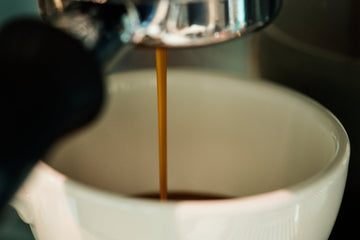Why Your Coffee Doesn’t Taste Right
Many beginners face the same dilemma: “My coffee doesn’t taste good — but I don’t know what’s wrong.”
In fact, most brewing problems come down to two key issues: under-extraction and over-extraction.
Understanding how extraction works — and how to recognize its signs — is the key to consistently good coffee. Even if you know your grind size, brew time, and water temperature, you still need to taste and interpret the results to improve.
What Does “Extraction” Mean in Coffee?
Extraction refers to how much of the coffee’s soluble compounds are dissolved into water during brewing. Coffee beans are about 30% soluble, but not all of that 30% tastes good. Within that soluble fraction are:
- Pleasant compounds: acids, sugars, aromatics
- Unpleasant compounds: harsh bitterness, woody or astringent notes
The goal is to dissolve just enough of the good compounds to balance sweetness, acidity, and bitterness — without pulling too many unpleasant ones.
The “Golden Cup” Standard — and Its Limits
In coffee theory, there’s a concept called the Golden Cup Standard, which defines the ideal extraction yield between 18%–22%.
- Below 18% → under-extracted
- Above 22% → over-extracted
However, this is only a guideline, not an absolute truth. Why? Because taste depends heavily on bean quality and roast level.
High-quality beans contain fewer undesirable compounds, meaning even if you extract slightly above 22%, the cup can still taste great. On the other hand, lower-quality beans may taste harsh even within the “ideal” range, because more unpleasant materials are extracted.
In other words, numbers can’t tell the full story — your tongue can.
Understanding Under-Extraction
Under-extraction occurs when water fails to dissolve enough of the coffee’s soluble materials — usually because the brew time is too short, the grind too coarse, or the temperature too low.
Taste Characteristics
- Sharp, sour acidity (like lemon or green apple)
- Watery or weak body
- Lacks sweetness or complexity
- May taste slightly salty or astringent
Why It Happens (Chemistry Insight)
Flavor compounds dissolve at different speeds:
- Acids dissolve fastest → dominate early in extraction
- Sugars dissolve next → add sweetness and balance
- Bitters dissolve last → add depth and finish
If extraction stops too early, you get mostly acid — with no sweetness or body to balance it. That’s why under-extracted coffee often tastes sour, thin, or even salty.
Common Causes
- Grind too coarse
- Brew time too short
- Water too cool (<88°C / 190°F)
- Inconsistent pouring or agitation
Understanding Over-Extraction
Over-extraction happens when you extract too much — including the bitter, woody, or dry-tasting compounds that appear late in the brewing process.
Taste Characteristics
- Overwhelming bitterness or dryness
- Harsh, woody, or straw-like flavors
- Heavy, dull mouthfeel
- Long, unpleasant aftertaste
Common Causes
- Grind too fine
- Brew time too long
- Water too hot (>95°C / 203°F)
- Too much agitation or too high coffee-to-water ratio
How to Fix Extraction Problems
The good news? Fixing extraction issues doesn’t require expensive tools — just a methodical approach.
Step 1: Focus on the Four Key Parameters
1. Grind size
2. Water temperature
3. Brew time
4. Brew ratio (coffee-to-water)
Among these, grind size is usually the most effective variable to adjust because it directly controls extraction speed.
Step 2: Keep Everything Else Constant
- Pick standard settings, for example:
- Light roast: 91–93°C (195–200°F)
- Dark roast: 86–89°C (187–192°F)
- Brew ratio: 1:15 (coffee:water)
- Brew time: ~2 minutes (for pour-over)
Then, use grind size as your main adjustment:
- If the coffee tastes sour or thin → grind finer
- If it tastes bitter or dry → grind coarser
Step 3: Taste and Refine
With each adjustment, taste the results and note changes in acidity, sweetness, and bitterness. Over time, you’ll train your palate to recognize extraction balance instinctively.
Quick Comparison Table
Beyond Numbers: Taste as Your Best Tool
While extraction percentages and TDS meters are useful, real coffee mastery comes from tasting.
In fact, even professional baristas rely more on their palate than on a refractometer during daily brewing.
Your taste buds are the most accurate gauge of whether your coffee is balanced. Once you can identify sourness as under-extraction and bitterness as over-extraction, you’ll never be lost again.
Final Thoughts
Brewing coffee isn’t about perfection — it’s about understanding.
When you know how to taste extraction, you gain control over every cup you brew. No more guesswork, no more “something’s off” moments — just clear, consistent improvement.







